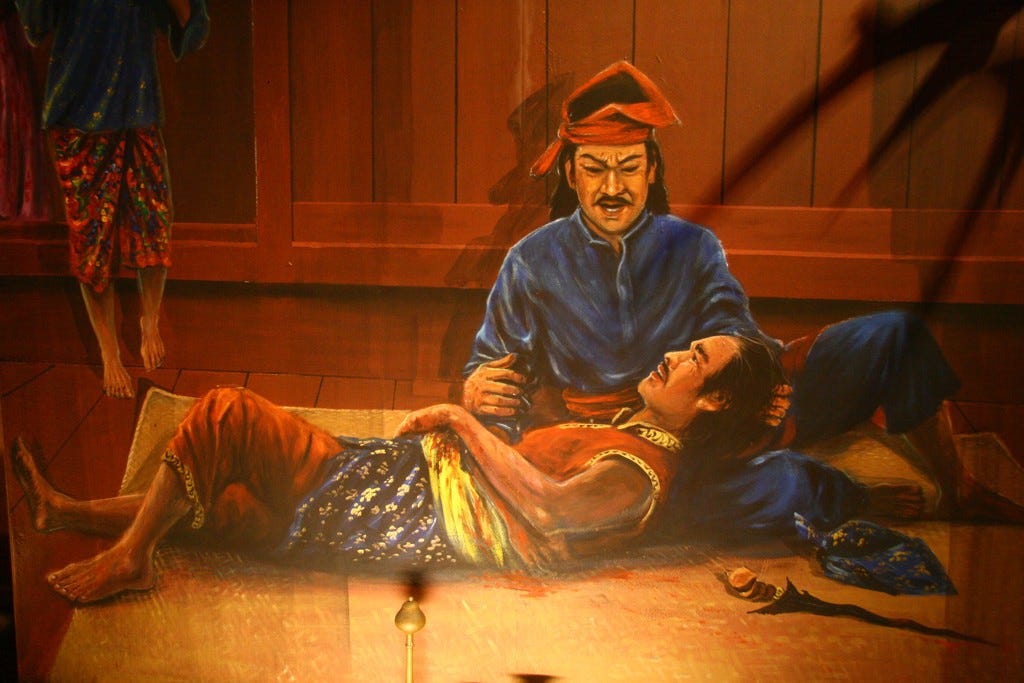
Murray Hunter
From Keris to Reformasi: The Evolving Hero in the Malay Imagination
Samirul Ariff Othman
May 19, 2025

If you want to understand the Malay world, don’t just read its policies—read its heroes. Because in Malay society, the idea of a wira (hero) is not just a figure of folklore or fiction; it is a moral compass, a cultural mirror, and increasingly, a political barometer. From the mystical pages of Hikayat Hang Tuah to the fiery street chants of Reformasi, the Malay hero has evolved—but what remains consistent, as Shahruddin Maarof so incisively notes, are the values that underpin heroism: budi pekerti (moral virtue), kesetiaan (loyalty), kepahlawanan (martial prowess), and ilmu (wisdom). In other words, the Malay hero must not only be brave; he must be righteous, loyal, composed, and wise. And in that sense, Hang Tuah wasn’t just defending Melaka’s Sultanate—he was modeling a civilisational code.
But unlike Western archetypes like Robin Hood, who openly defies power to redistribute wealth, the Malay hero works within a framework of social harmony, divine order, and communal loyalty. That doesn’t mean Malay culture lacks its own moral rebels. Just look at Hang Jebat—the friend-turned-foe of Hang Tuah—who questioned injustice and stood against a tyrannical ruler. Though once cast as a traitor, modern Malaysians are increasingly viewing him as a proto-reformer: the man who dared to say the king could be wrong. That same impulse appears in historical figures like Mat Kilau and Tok Janggut, warriors who rose against colonial taxes and foreign rule. They may not have robbed from the rich, but they channeled public anger into a form of spiritual resistance—guarding tanah air (homeland), adat (custom), and agama (faith) with their lives.
As Malaysia transitioned from empire to independence, a new class of political heroes emerged. Tunku Abdul Rahman, the soft-spoken architect of Merdeka, redefined heroism through diplomacy and unity. He was followed by Dr. Mahathir Mohamad, the nation-builder who turned industrialisation into an act of defiance and national pride. But the postmodern Malay hero arrived in the person of Anwar Ibrahim—a man whose story reads like a Shakespearean epic. Imprisoned, vilified, resurrected—Anwar transformed suffering into moral capital and came to symbolise the reformist hopes of a restless generation.
What’s striking across these arcs—from Hang Tuah to Anwar—is that the Malay hero always walks a tightrope between obedience and justice, tradition and disruption. Sacrifice is expected; personal gain is suspect. Even when heroes defy authority, they are not doing it for glory but to uphold a higher moral order. This is why the Malay hero rarely fits cleanly into the Robin Hood mold. Redistribution is not the endgame; restoration of keadilan (justice), perpaduan (harmony), and takdir (destiny) is.
And yet, as Malay society digitalises and democratizes, the making of heroes is no longer monopolised by hikayat or history textbooks. A viral video, a courtroom verdict, or a protest chant can now shape the nation’s idea of who deserves the title of wira. The arena of action has shifted—from royal courtyards to cyberspace—but the stakes remain the same: Who speaks for the people? Who fights for the just order? And who will sacrifice for something bigger than themselves?
Malay heroism, then, is not static. It is a living, evolving tradition—responsive to crises, refracted through culture, and reimagined with every generation. In a world of shifting power and blurred truths, the Malay hero remains both anchor and weathervane—grounded in budi, but forever sensing the winds of change.
Your donations are vital to keep some independent voices alive.
Just click here or goto https://buymeacoffee.com/murrayhunter
————-—————————————————-
Author Bio:
Samirul Ariff Othman is an international relations analyst and economic commentator. A former senior researcher at the Malaysian Institute of Economic Research (MIER), he has written extensively for numerous regional outlets. Currently he is a senior consultant with Global Asia Consulting and an adjunct lecturer at Universiti Teknologi PETRONAS (UTP).
No comments:
Post a Comment